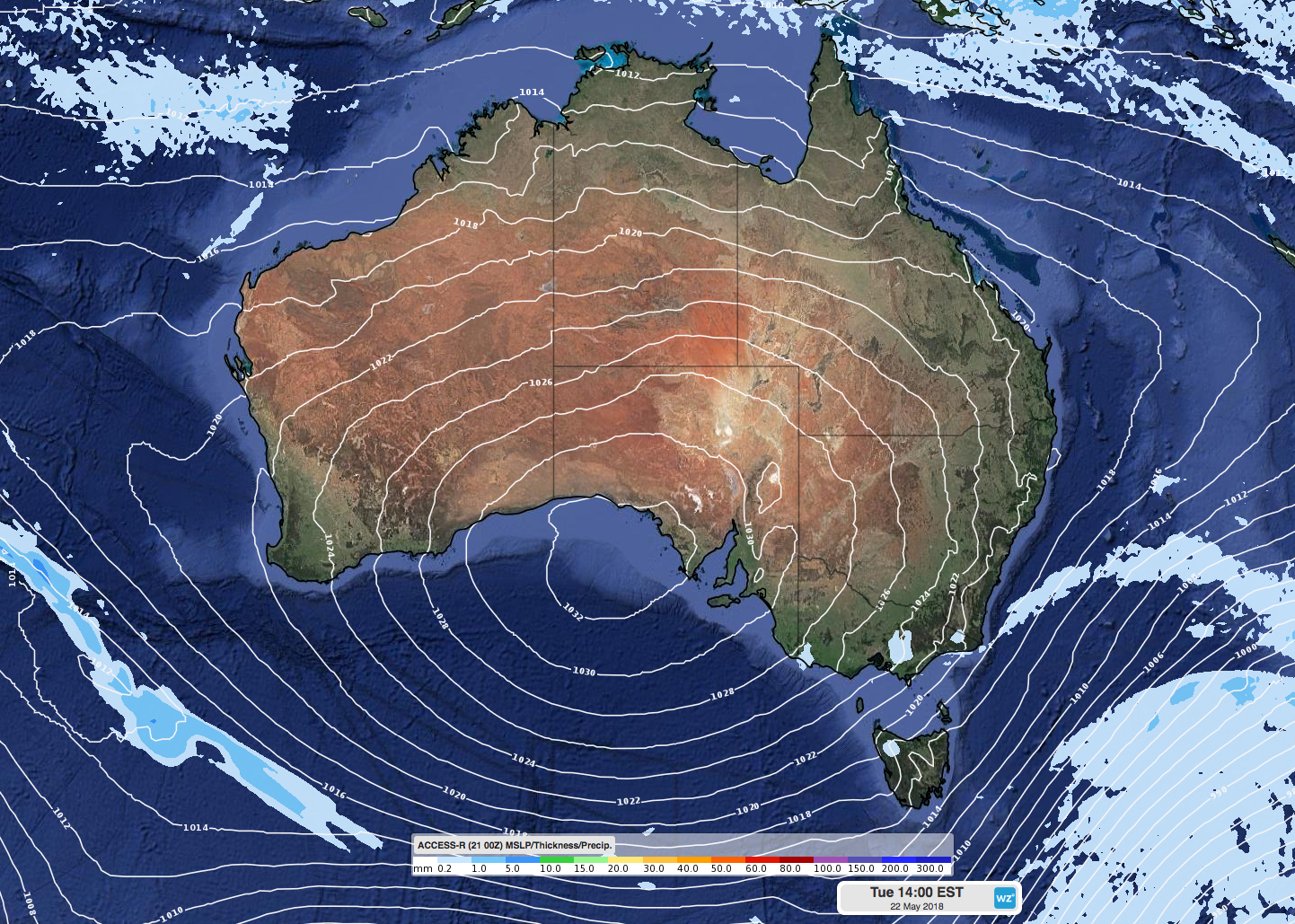High pressure systems: everything you need to know

There's been lots of talk about high pressure systems in Australia during the last week and this discussion looks set to continue well into the end of May, possibly longer.
High pressure systems are a quintessential part of Australia's transition seasons and they frequently bring sustained periods of settled weather.
Large high pressure systems, such as the one parked to the south of Australia this week, can dominate the weather across an entire continent.

At any given time, numerous high pressure systems dwell at our planet's surface. Many of them reside in two 'bands' around the subtropics - aptly named subtropical ridges - while other highs sit over the poles.
High pressure systems get their name because the air pressure at sea level in the centre of the systems is higher than its surroundings. This peak in surface pressure is caused by air sinking down from the upper atmosphere, causing it to effectively pile up at the surface, like a mound of sand inside an hourglass.
As the air sinks towards the ground, it also warms up and creates a stable atmosphere, often resulting in cloud-free skies over land. In the southern hemisphere, air circulates in an anticlockwise direction around the centre of high pressure systems.
The high pressure system currently to the south of Australia has had a central pressure of around 1035 hectopascals on numerous occasions during the last week, periodically venturing higher than this.
While this is a strong system, it's not as strong as they get.
According to the World Meteorological Organisation, the highest sea level air pressure ever reliably measured on earth (below 750 metres above sea level) was 1083.8 hectopascals over Siberia in December 1968.
- Weatherzone
© Weatherzone 2018